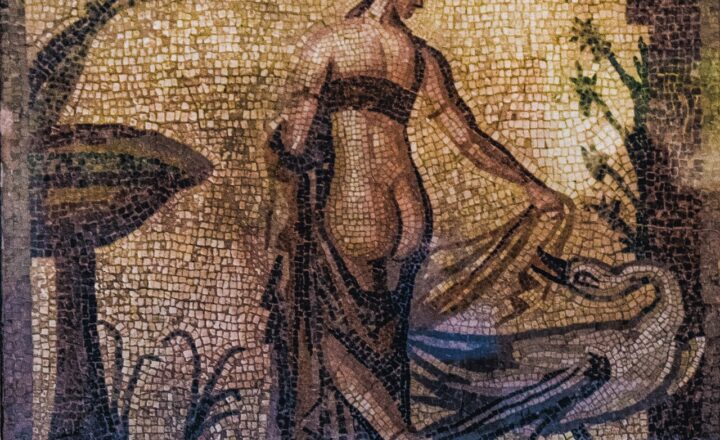
The history of Homo sapiens is a fascinating journey of migration, adaptation, and survival. Understanding how modern humans spread across the globe provides insight into our species’ resilience and innovation. The Great Human Migration is a tale woven with adventure and struggle, spanning continents and millennia.
1. The Origins of Homo sapiens
Scientifically classified as Homo sapiens, modern humans are believed to have emerged in Africa around 300,000 years ago. Evidence from fossils and archaeological sites indicates that early Homo sapiens were hunter-gatherers, relying on the rich ecosystems of the African continent for sustenance. The adaptability of these early humans played a crucial role in their eventual migration, supported by both environmental factors and biological evolution.
Recent studies suggest that our species went through significant physical and cognitive transformations, enhancing our ability to communicate, create tools, and collaboratively work in groups. As populations grew, some groups began to venture into new geographical areas, paving the way for a migration that would forever reshape human existence.
2. The Routes of Migration
The journey of Homo sapiens across the globe began as early as 210,000 years ago, according to genetic evidence. Multiple waves of migration led to the distribution of our species across continents. Here are the primary migration routes:
- Out of Africa: A pivotal moment in human history, the Out of Africa migration occurred about 70,000–100,000 years ago when groups of Homo sapiens began to leave Africa, spreading into the Arabian Peninsula and beyond. Archeological sites in Israel provide evidence of early human presence in this region, suggesting a starting point for further exploration northward into Europe, Asia, and the rest of the world.
- Into Eurasia: Following their departure from Africa, humans moved into Eurasia, navigating diverse landscapes. Genetic studies indicate that populations interbred with Neanderthals, integrating valuable genetic traits that increased adaptability to different environments. Continued migration led to the colonization of Europe and Asia, adapting to vastly different climates and conditions.
- The Coastal Migration Route: Research suggests another migration path along the coastlines, where increasing sea levels allowed early humans to utilize maritime resources as they moved from Southeast Asia to Australia. By about 50,000 years ago, Homo sapiens reached Australia, showcasing their ability to adapt to diverse environments with distinct ecosystem challenges.
- The Bering Land Bridge: Perhaps one of the most significant migrations occurred when Homo sapiens crossed the Bering Land Bridge, a land connection between Asia and North America that existed during the last Ice Age around 25,000 years ago. This migration resulted in the eventual settlement of the Americas, where early human hunters adapted to the vast landscapes filled with diverse flora and fauna.
These significant migration routes illuminate how Homo sapiens adapted to their constantly changing environments, leaving trails of prehistoric settlements still visible through archaeological research today.
3. The Impact of Climate Change on Migration
Climate change over millennia played a critical role in shaping human migration patterns. During periods of glaciation, advancing ice sheets altered land availability, while rising temperatures led to the expansion of habitable zones. Here are some key impacts of climate change on migration:
- Resource Availability: Shifts in climate affected the availability of resources such as food and water, prompting groups to migrate toward more favorable conditions. For example, droughts in Africa likely forced populations to seek resources elsewhere, leading to migrations to more fertile regions.
- Environmental Adaptation: Different environments promoted innovation among Homo sapiens, with groups developing unique technologies and cultural practices based on ecological needs—be it tools for hunting in colder climates or fishing gear for coastal communities. Each adaptation was essential for survival as they explored new territories.
- Cultural Exchange: Migration led to the exchange of ideas and technologies between distinct human groups. As populations settled in new areas, they brought along their cultural practices, influencing one another’s social structures and technological advancements. This cascade of cultural evolution played a fundamental role in the eventual development of civilizations across the globe.
The interplay between climate and human migration highlights the adaptability of Homo sapiens and underscores our ability to thrive amidst environmental challenges.
4. From nomads to settlers: The Impact of Agriculture
The transition from a nomadic lifestyle to settled agricultural societies marked a significant change in human history. As Homo sapiens migrated into new territories, they began to cultivate crops and domesticate animals.
The Development of Agriculture: Around 10,000 years ago, the advent of agriculture allowed human societies to stabilize, leading to larger populations and more complex social structures. This shift also enabled settlements to flourish, ultimately resulting in the establishment of cities and civilizations.
Agriculture changed the dynamics of human migration as well, with settled communities often expanding into surrounding lands. Here are some notable impacts:
- Population Growth: The ability to produce food surpluses supported larger populations, leading to migrations into previously uninhabited areas to support growing communities.
- Trade and Cultural Exchange: Established agricultural societies engaged in trade routes, exchanging goods, technology, and cultural practices across regions. This created networks that led to increased migration of traders and travelers.
- Conflict and Displacement: With the growth of agricultural societies, competition for resources sometimes led to conflict. These pressures could initiate migrations, often forcing groups to seek new lands to settle while impacting existing populations.
The establishment of agriculture played a fundamental role in shaping the dynamics of human migration, altering the way societies interacted and expanded.
5. The Legacy of Migration: Connecting Humanity
The Great Human Migration is more than just a historical narrative; it’s the backbone of human identity. It serves as a powerful reminder of our shared heritage and interconnectedness. Here are a few important points highlighting the continuing legacy of migration:
- Genetic Diversity: The migration of Homo sapiens has shaped the genetic makeup of modern populations today. Genetic studies reveal how migration and interbreeding with other hominins led to diverse traits, contributing to human resilience against diseases and environmental changes.
- Cultural Exchange: The intertwining of cultures through migration has enriched human society, fostering artistic movements, languages, and traditions that resonate worldwide. This cultural melting pot continues to evolve as new communities settle and interact across the globe.
- Common Challenges: The historical narrative of migration reflects humanity’s challenges and achievements. Societal adaptations, technological innovations, and coping strategies developed throughout history provide valuable insights as we face contemporary global issues, such as climate change and mass migration today.
In summary, the Great Human Migration stands as a testament to our species’ resilience and ability to adapt. By tracing our collective history, we can better appreciate the bonds that unite us as a global community today.
Conclusion
The migratory journey of Homo sapiens is more than a tale of adventure; it reflects our abilities to thrive, adapt, and innovate in the face of challenges. Understanding the complexities of this journey gives us deeper insights into humanity’s shared past, the diversity of cultures we cherish today, and the undeniable connections that bind us all together. As we continue to navigate the complexities of modern migration, history reminds us of our common heritage as we explore what it means to be human, together on this vast planet.
Whether you find yourself in urban centers or rural communities, the legacy of migration is evident in everyday life, inspiring future generations to share knowledge, culture, and community in a world that is continuously evolving.







